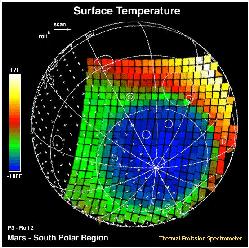This graph contains information about the surface temperature of Mars.
Click on image for full size
Image from: NASA/JPL
Mars Global Surveyor Measures Martian Surface Temperatures
This image shows how cold the surface of Mars can be. The temperature was measured by the Mars Global Surveyor spacecraft. The scale to the left shows that purple regions are the coldest, about -170 degrees F (-113C), while the yellow areas are the warmest at about 17 degrees F (-8C). The surface of Mars may often become warmer than 17 degrees. Other data returned by Mars Global Surveyor shows the temperatures can be 30 degrees F (~0C) or more. These temperatures are very cold, however. The surface is either freezing cold or much colder than freezing. No wonder the water of Mars may be frozen into the ground! Freezing temperatures may have something to do with the thin atmosphere and lack of a greenhouse effect.
Temperature data from the surface of Mars is being returned everyday now that Mars Global Surveyor has reached Mars. Check the Mars Global Surveyor Image Archives or the Mars Global Surveyor Webpage, below, for sample data. Scientists are interested in learning if temperatures ever come above freezing for long period of time. This would affect theories about Martian water and climate. Recent Martian exploration is directed at these and other questions.
You might also be interested in:

It has been more than 30 years since America's first exploratory missions to Mars. Here are some of the instruments carried onboard Mars Global Surveyor (called MGS for short). Many of these instruments
...more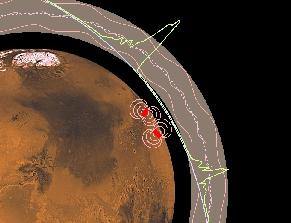
These are some of the initial findings of Mars Global Surveyor. There definitely is a magnetosphere near Mars. suggests scientists must rethink theories about the evolution of Mars. Geologic features at
...more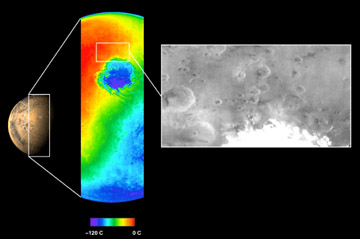
The Mars Odyssey was launched April 7, 2001, from Florida. After a six-month, 285 million-mile journey, the Odyssey arrived at Mars on October 24, 2001. The Odyssey is in its aerobraking phase right now.
...more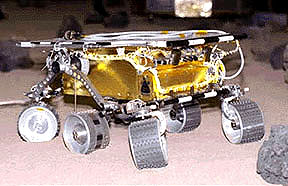
The Mars 2005 mission is still in the planning stages. It is set to launch in the year 2005.
...more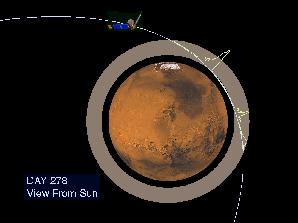
The Mars Global Surveyor reached Mars in September of 1997. But it didn't make it into its final mapping orbit until February 1999. What took so long? Surveyor needed to reach a near-circular, low-altitude
...more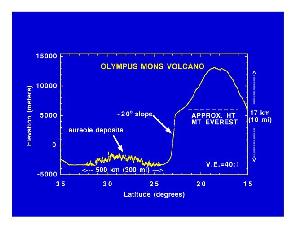
Mars Global Surveyor carries an instrument which measures the heights of things. This instrument is called an altimeter, or "altitude-meter". The graph to the left shows the results returned from Mars
...more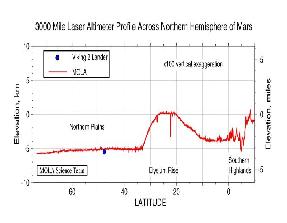
Mars Global Surveyor carries an instrument which measures the heights of things. This instrument is called an altimeter, or "altitude-meter". The picture to the left shows Mars Global Surveyor's measurement
...more


